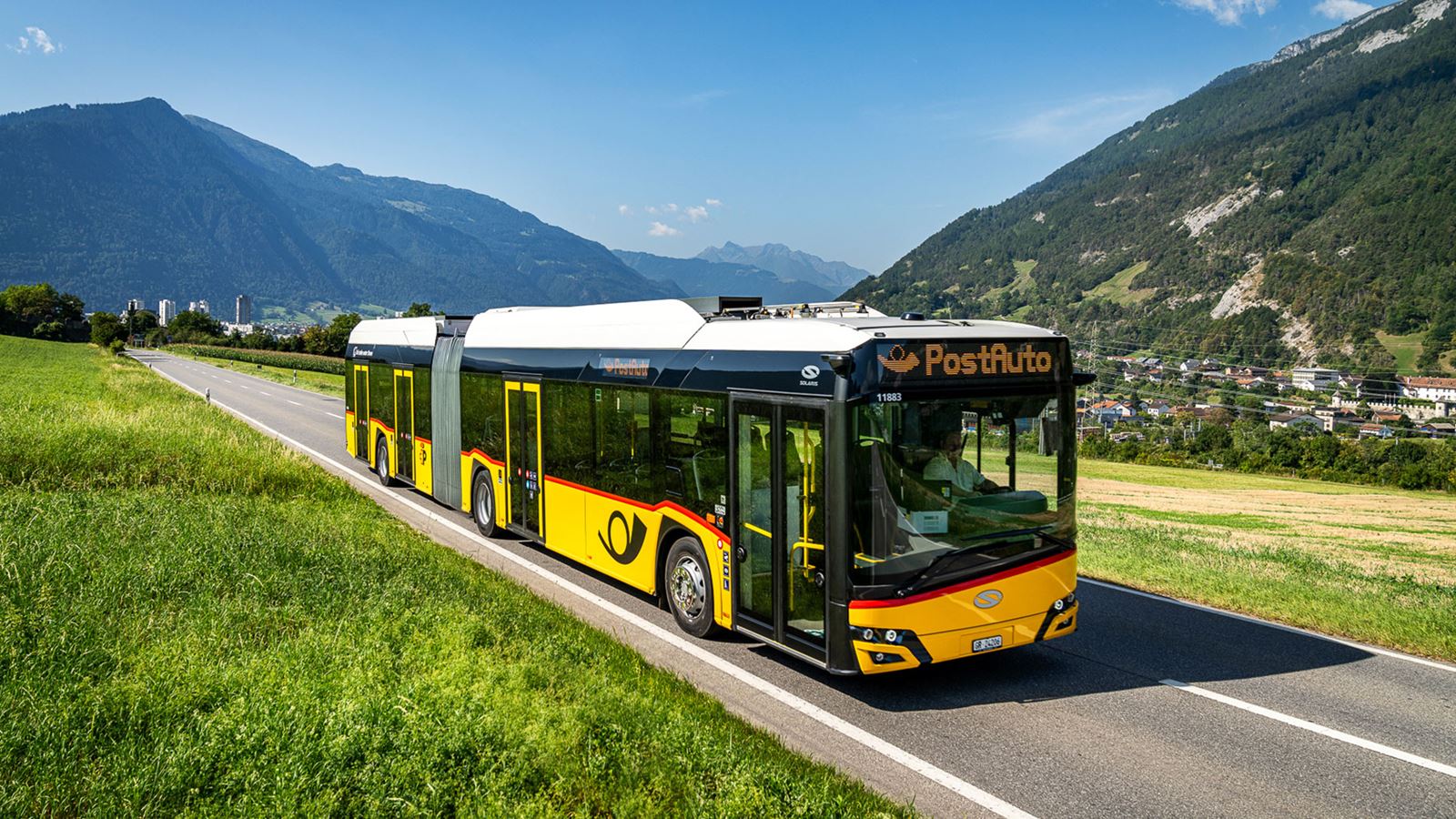Sustainable mobility solutions
We’re switching to alternative drive systems
Our goals
As the biggest bus company in the Swiss public transport sector, PostBus is leading by example by converting its fleet to alternative drive systems. Together with politicians and public authorities, we want to meet society’s expectations. Our aim is for all Postbuses to be fossil-free by 2035.
- We will convert our entire fleet to electric buses by 2035 at the latest.
- We will be completely carbon neutral in our operations from 2030.

Our drive towards green
Net zero by 2040
A sustainable future for the next generation is a key concern for PostBus. This includes:
- Converting the entire fleet to electric buses by 2035 at the latest
- 100 percent electricity from renewable energy sources
- Working to make our in-house operations carbon neutral from 2030. That means reducing our own emissions by 2030 in line with the specifications of the Science Based Targets initiative. We don’t offset emissions. From 2030, we will remove unavoidable residual emissions from the atmosphere and store them. This can be done through reforestation and sustainable forest management, conversion into biochar or with the help of technical systems.


